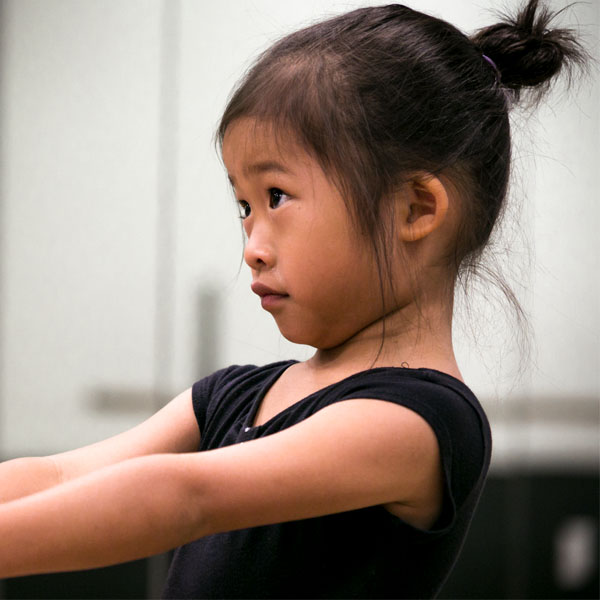Why is dance important?
First and foremost, dance is important because it’s fun! Our teachers are dancers themselves and share their passion with their students. Additionally, the National Dance Education Organization says that dance trains a better combination of flexibility, strength, endurance, and coordination than most other physical pursuits. But beyond that, educators are increasingly recognizing the importance of the arts on cognitive development. Creative and aesthetic pursuits like dance have been repeatedly linked to improved physical, mental, and social well being, as well as academic achievement. More than ever, dance and the arts are being recognized as essential pieces of a complete education by leading teachers, administrators, and educational philosophers.
Why start so young?
For you, it may seem a little quick for your child to be starting dance lessons. After all, it wasn’t so long ago he or she was just learning to walk. Maybe, but we’ll bet they haven’t stopped moving since! For your child, dance lessons are a way to have fun while learning to move in exciting new ways. And according to the American Academy of Pediatrics, toddler dance classes are a great way to develop strong, flexible, healthy muscles, not to mention complex motor skills and essential social competencies like listening, cooperation with others, and increased self-confidence. We don’t expect young kids to be able to perform a perfect pirouette (although they can learn what “pirouette” and other French terms mean). Our teachers are there to create a fun and safe atmosphere for your child to learn and grow.
Ok, but why the focus on Ballet?
While there are many different styles of dance, Ballet teaches the strength, balance, flexibility, coordination, and movement basics which are the foundation of everything from Hip Hop to Salsa. The Child Development Institute is among those who expound on the benefits of Ballet training both as a tool for childhood development and a foundation for later dance training. Plus, it makes it easy for kids to measure their progress which gives them a great feeling of accomplishment with each new skill that’s learned.
The National Dance Education Organization lists the following as reasons to learn standardized dance forms:
- Provide a scaffold outlining the breadth and scope of learning and teaching dance as an art upon which to design curricula and course syllabi. Standards are a guide, not a directive nor a curriculum. They offer constructive support, suggesting areas of curriculum but not defining it. Standards allow each district or school to develop an approach most suited to local or individual values.
- Serve as a springboard for creativity for the learning and teaching of dance making: improvisation, choreography, and composition. Standards suggest avenues of creative exploration in the arts-making processes of Performing, Creating, Responding to, and interconnecting dance learning to knowledge of other disciplines and life skills.
- Define age-appropriate expectations and levels of achievement in the art of dance. Standards inform individual schools of dance and school districts what students should know and be able to do in the art of dance at certain benchmark levels when taught by a highly qualified dance teacher in a graduated curriculum.


Leave a Reply